AI, Bots, and Canvases, Part II: Cortana to rule the world
In 2016 bots and artificial intelligent digital assistants seem to be the Next Big Thing.
Back in 2014 I posited that Cortana would be the intelligent, voice-engaged UI for our increasingly mobile experiences. As a mediator between our "will" and our apps, I thought that she would effectively make apps "invisible" as she became the ambient user interface of our mobile computing lifestyles.
As Microsoft continues to evolve Cortana toward the vision the company sees for its AI digital assistant, I've seen that my 2014 analysis was not entirely correct. Nor was it entirely wrong.
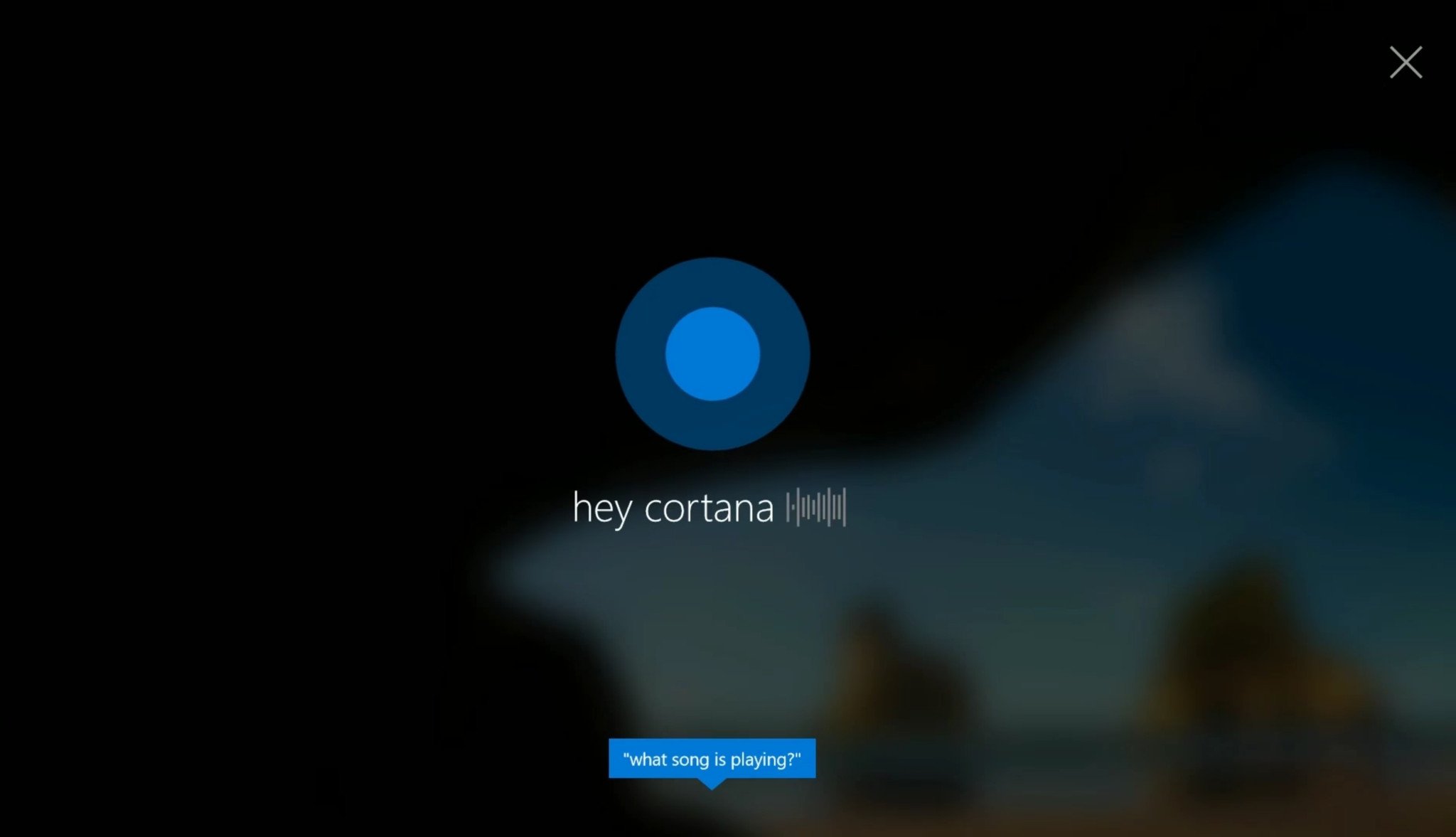
I did not foresee bots. Nor did I identify human language as the next user interface as Satya Nadella, Microsoft's CEO, did this year. My analysis identified Cortana (at least for Microsoft's ecosystem) as the next personal computing UI, not human language.
Still, in 2014 I was two years early with my claim that Cortana would be the next big thing. It wasn't until Build 2016 that Satya Nadella laid out the ambitious details of Microsoft's strategy to enhance Cortana's abilities through extensibility, making her a potential meta-app to a host of intelligent apps, or bots. He made it known that this cross-platform AI was being positioned as a platform for the next stage in the evolution of the personal computing user interface.
Cortana may emerge as "The Next Big Thing" in the age of AI and bots.
Through this vision, we may see Cortana emerge as The Next Big Thing, among the industry's seeming acknowledgment that AI and bots are "The Next Big Thing." As a platform company, Microsoft's approach to Conversations as a Platform certainly plays to its strengths.
I want to give a better picture of how Microsoft is one of the leaders heralding us into the new world in which we may soon find ourselves interacting. A world where bots and AI digital assistants may very well be a part of the verbal conversations and text-based dialogues we engage in daily.
Beginning the conversation
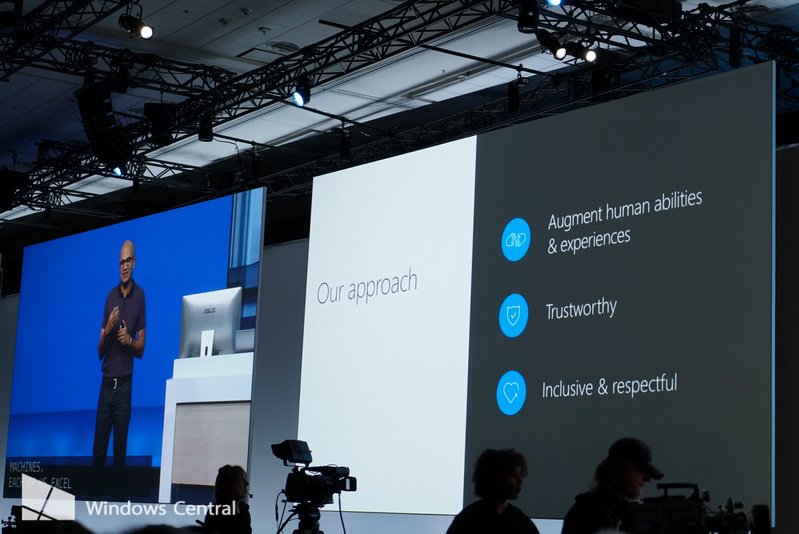
By approaching the personal computing user interaction from the position of conversations as a platform, Microsoft has positioned itself advantageously for the shift to AI and bots. As one of its core strengths, Microsoft is the provider of a host of cross-platform apps and services, including conversation tools such as Skype and Cortana. Additionally, with the Bot Framework, Redmond has extended upon the tools it offers to developers that make Microsoft's ecosystem a platform for app development. Windows is indeed a devbox.
Get the Windows Central Newsletter
All the latest news, reviews, and guides for Windows and Xbox diehards.
Conversations as a Platform and the Bot Framework strategy are a comprehensive approach.
Moreover, Microsoft's Bot Framework provides the development tools that allow developers to target a range of first- and third-party Conversation Canvases. This broad AI and bot strategy gives Microsoft a comprehensive solution and a potential preemptive position of authority in relation to the possible industry adoption of bots.
Furthermore, Redmond's addition of a bot "storefront" or registry to complement its bot development platform provides a central repository for anyone to find bots in these very early stages of this transition.
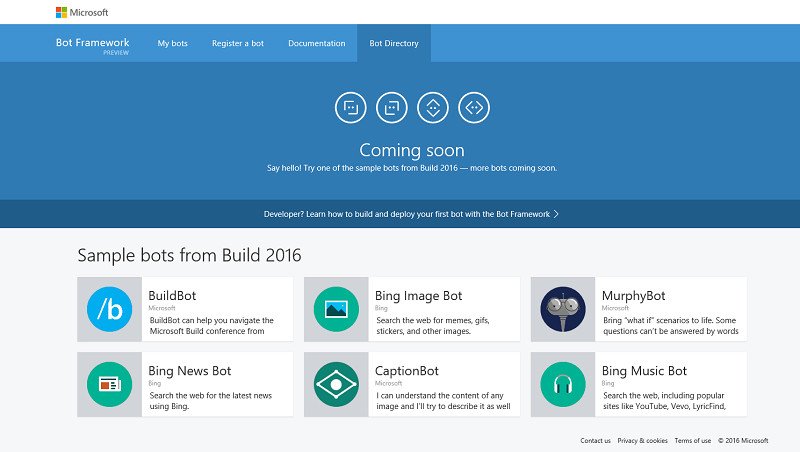
Building the foundation
Microsoft is, of course, leading this charge with its own Conversation Canvases, while also providing a platform for third-party canvases such as Line, Slack and others. As an agent in Microsoft's Conversation Canvas strategy developers will be able to use Microsoft's Bot Framework to build bots (or experts/intelligent apps) that will communicate proactively with Cortana. As a meta-app that knows the user across contexts, Cortana will be able to mediate a dialogue between the user and bots to accomplish a task which would typically require user initiation, execution and completion.
In this forward-looking scenario the inefficient "warehouse of apps" model that is popular today is replaced in large part with bots as apps and AI digital assistants as meta-apps. Marcus Ash, Group Program Manager for Cortana for Windows demonstrates this at Build 2016 in the video below:
This scenario is Microsoft's vision. It is not a new vision. Despite all of the fanfare, headlines and the rush of companies that seem to be flocking to AI, we are simply seeing the fruits of years of labor and planning. Technology has only recently reached the point where the beginning of this transition to a world infused with AI and proactive bots is possible.
Microsoft: We weren't t late we were way too early
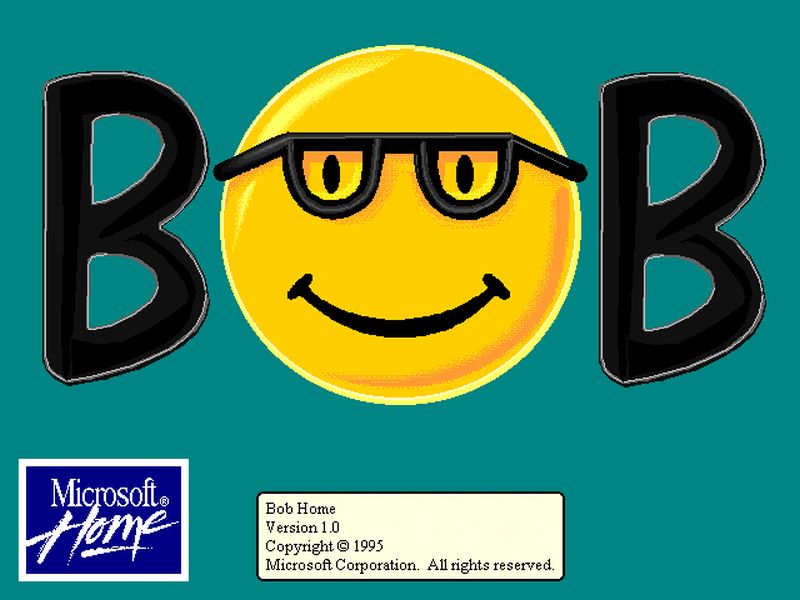
Despite the concert of raised voices throughout the industry hailing the merits and potential of the UI's evolution, AI and the transition of apps to bots, our voices are merely joining a cacophony of voices echoing from the past. Microsoft has invested many years and millions of dollars in research and development into AI, natural language processing and machine learning. Don't let Cortana's 2014 arrival to Window Phone — three years after Siri and two years after Google Now — fool you. Microsoft's been at this game for a long time. Before there was Cortana, there was Bob.
Microsoft Bob was an assistant that was before his time.
Microsoft's desktop-restricted Microsoft Bob, which was introduced in 1995, was an early attempt at an AI assistant that didn't have the benefit of an "always-connected" internet, the ubiquity of smartphones, nor the maturity of natural language processing and machine learning that is available today. Clearly, Microsoft was not a company without ambition; Bob was just way ahead of his time.
Beginning at the 3:25 mark in the 21-year old Microsoft Bob launch video below, then CEO of Microsoft, Bill Gates, promises and demos a digital assistant that we would be able to talk to and that would also talk back to us.
Twenty years later the future that Gates predicted is here. As we were then given a peek at a future that has been realized, a foundation has been laid for the future of AI and bots that we are now glimpsing.
In the video below, scientist Eric Horvitz of Microsoft Research talks about the new age of artificial intelligence. He talks about where we are, where we are headed and how we will get there. He shares some of the accomplishments in machine intelligence and other technologies that Redmond's massive investments have brought to the industry:
Horvitz's vision for this technology anticipates a practical and widespread application of artificial intelligence. He actually has an AI secretary, Monica, that helps organize his day and greets visitors to his office. Though AI will take many forms and perform many obscure and back-end functions, Microsoft's most consumer-facing AI and the personal "face" (like Monica) for the technology will be Cortana.
It's personal

Once, Microsoft entered the digital assistant space; they approached it from an intentionally deeply personal perspective. This intense personal approach was in stark contrast to how rivals Apple and Google positioned their digital assistants Siri and Google Now respectively.
First, her name connects her to a beloved character from one of the most popular game franchises, Halo. As a result, Microsoft's digital assistant indirectly benefits from the personality, back story and even the face (which neither Siri or Google Now have) of her fictional counterpart.
Second, and more directly, Cortana was modeled after real personal assistants, Notebook and all. This user-controlled notebook is where she, like a real assistant, records what she learns about a user.
Additionally, Redmond believes that personality is essential to encouraging interaction with an AI to facilitate wide-spread adoption. Deborah Harrison, Editorial writer for Cortana at Microsoft, elaborated on this point at the 2016 Re-Work Virtual Assistant Summit.
If Microsoft's ambitions for Cortana ended with the basic reminder-type scenarios that are at the core of what our digital assistants are popularly used for today, Redmond's investments in natural language processing, deep neural networks and machine learning that Eric Horvitz talked about above would be in vain. Thankfully that is not the case.
Cortana as a platform makes her "CEO" rather than a mere assistant
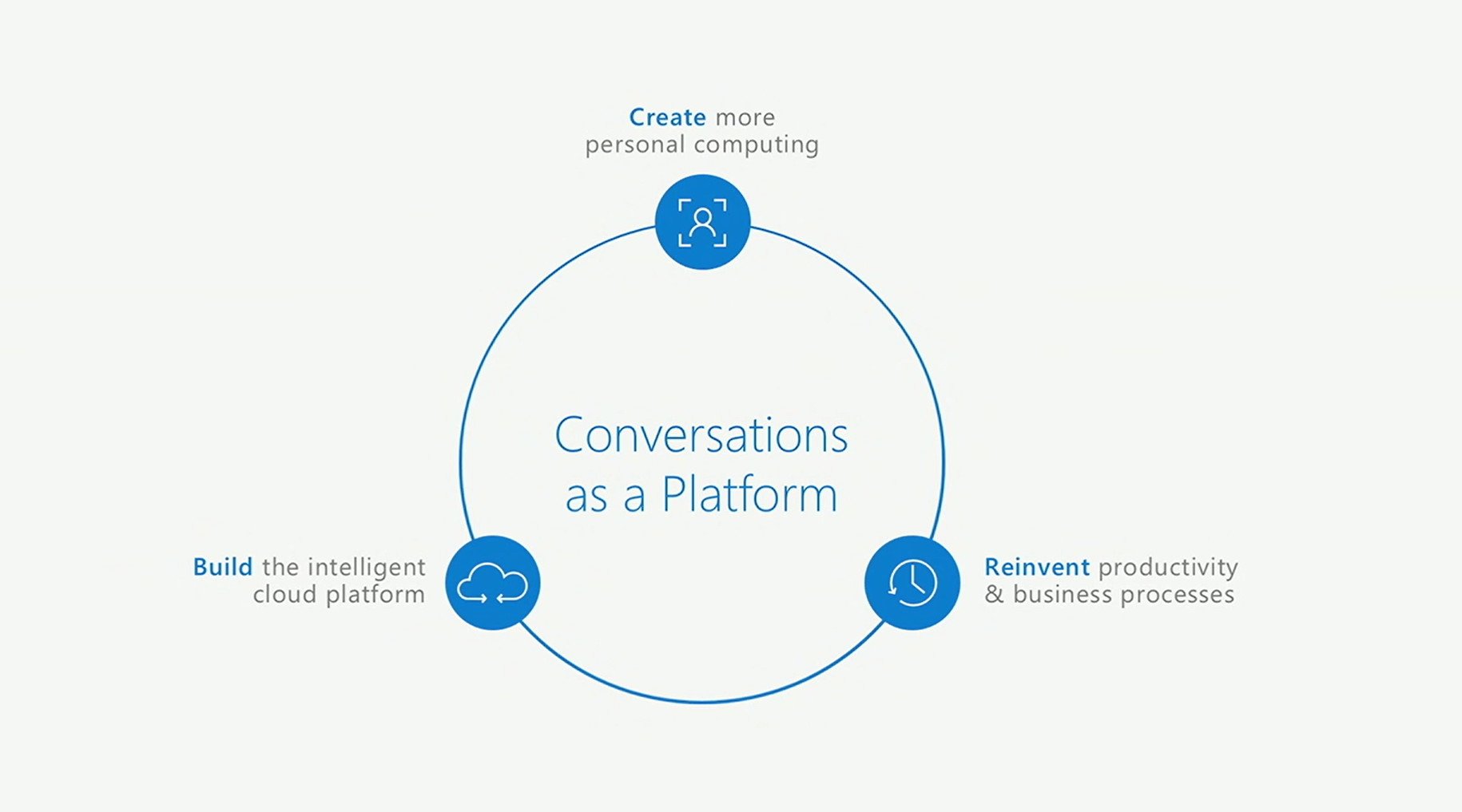
When looking at Cortana from just her most user-facing features, it's easy to fall into the trap of comparing her feature vs. feature with competitors Siri and Google Now. But as we delve into Cortana's foundations, her history, her present and her strategically planned future, its becomes clearer that Microsoft is far more interested in creating a ubiquitous and pervasive intelligent platform than a mere voice assistant.
Nadella, emphasized the boundless nature of Cortana compared to her competitors this way in an interview with Business Insider:
"So I think of Cortana, its uniqueness will come because it can take your personal data, your Office 365 data, and be available across all platforms. No one else, at least as far as I can tell, is taking that unbounded approach to something like personal digital assistants. Anyone else who has a personal digital assistant, it's mostly a personal digital assistant that just sits and resides in either their software or their device or what-have-you.
He continues with expounding on the company's unique approach to third-party bots in conjunction with Redmond's competitive advantage with cloud technologies:
Take bots — no one else is talking about bots that can be built using all the rich cognitive cloud services we have. How did one teach a bot how to have a conversation with a human? That requires conversational understanding, dialogue understanding. We have APIs for doing all of that in our cloud in Azure. And you can, in fact, build a Slack bot, or you can build a bot for Line, or you can build a bot even for Facebook. We don't know yet exactly what Facebook does, but our back end is independent. And you can just use your back end to build bots, like building mobile apps or building websites in the past.
He sums up that portion of the conversation by sharing that (in addition to Cortana's role) Microsoft has first-party Conversation Canvases that expand on Microsoft's position as a duo user (personal and professional) platform for the new age of bots (intelligent apps):
Then we have our own set of conversational canvases like Skype that they're opening up for these bots. So the approach we're taking is much more of a platform company approach, much more of an approach that says that it's both your personal and professional data. And if I take those two dimensions, I don't think anyone else comes at it that way.
This broad scope of positioning Cortana as a platform within the context of Microsoft "Conversations as a Platform" strategy potentially positions Microsoft to benefit greatly from developers who adopt Microsoft's Bot Framework.
Microsoft has a platform for that
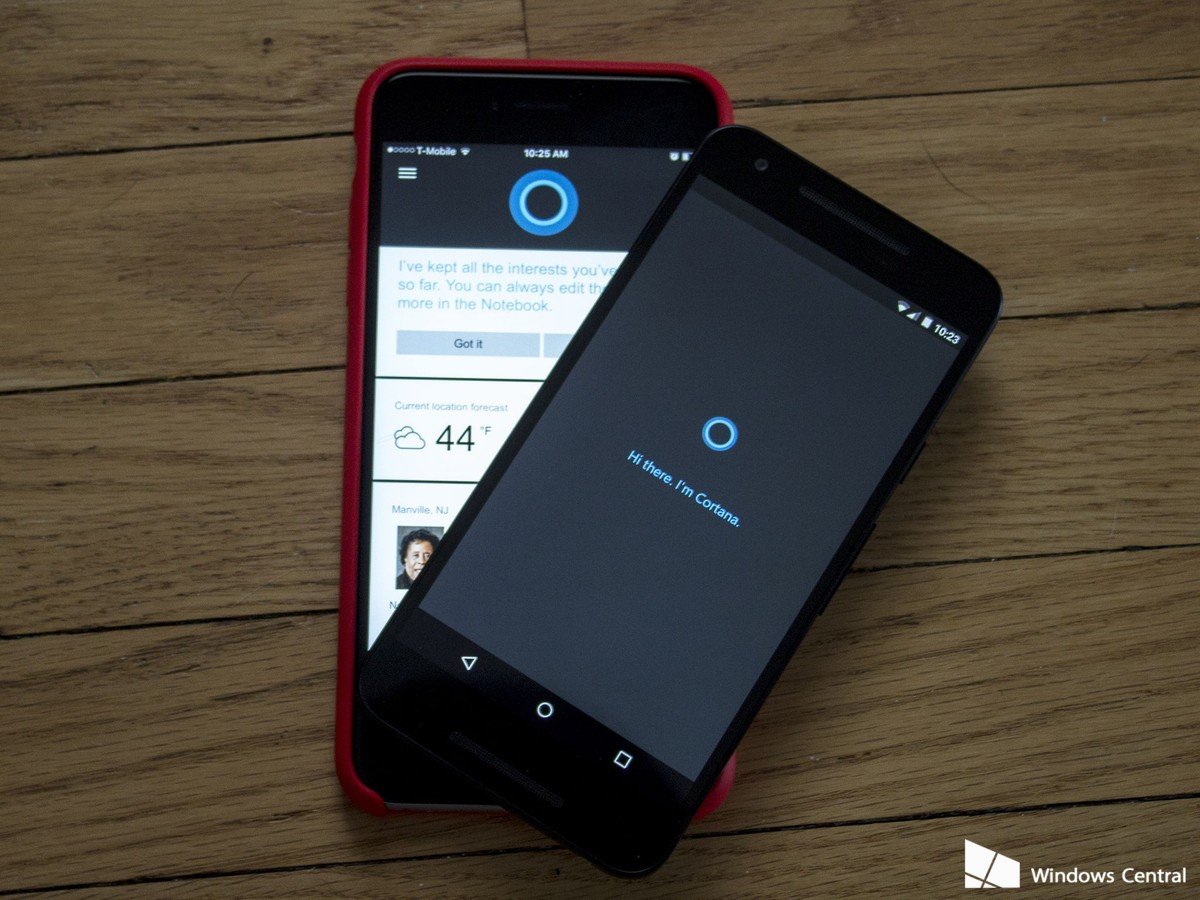
When observing Microsoft's personal computing strategy, we see that the company is positioning an array of its products and services as the "computing function" or platform that others use to get things done. Some examples include Azure as a cloud-based computing environment, a host of cross-platform apps including Office, Windows as a developer's platform and even Cortana across various platforms and devices. Matt Rosoff articulated it this way during his April 2016 interview with Nadella: "When I heard platform, I used to think operating system. And this sounds like it's a platform as a particular type of computing function, regardless of operating system."
Microsoft's cross-platform ambitions position platforms like Cortana as industry-wide tools.
Microsoft is clearly positioning its vast range of tools and services as the go-to brand for a wide variety of computing functions. By leveraging Cortana, as an industry-wide platform that developers can tap into by connecting apps as bots (and voice-interaction as traditional apps in Windows) Microsoft's AI digital assistant is positioned more aggressively as both a consumer and enterprise tool than Siri or Google Now.
Cortana is the platform for that
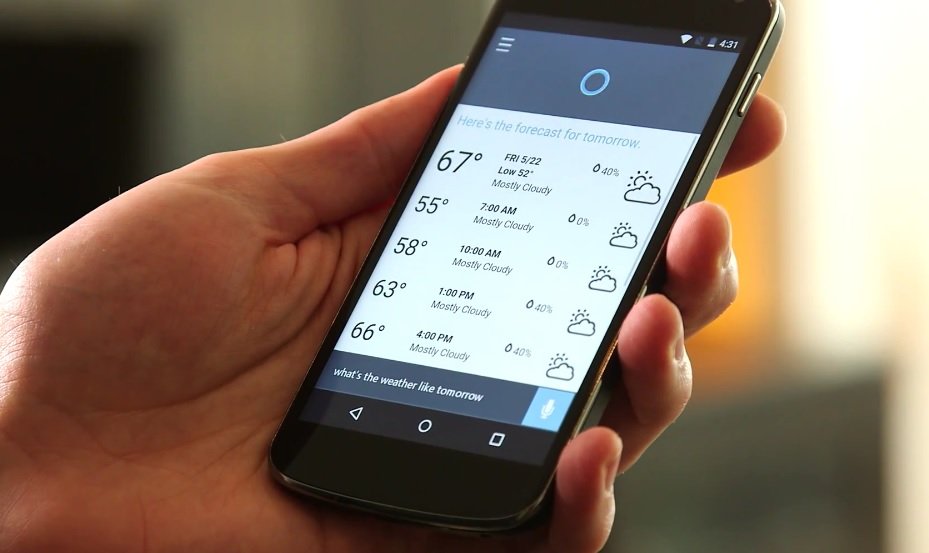
Personal computing is increasingly mobile, and users often transition between devices. Thus Microsoft's strategy for an unbounded AI as a platform and Conversation Canvas agent is likely a strategic advantage over competitors offerings. In a current paradigm where many developers have not yet embraced developing Universal Windows Store apps, Cortana is a cross-platform "platform" that can potentially be targeted by developers with platform-agnostic bots.
Rather than simply courting developers to target Windows, Microsoft can court developers to target Conversation Canvases and Cortana (through Skype and other canvases), with bots that run on all platforms. If successful, this would help to close the app gap. Indeed, Microsoft's push to improve Cortana and Skype on Android and iOS may be an indication of this strategy.
The Untold App Gap Story Part IV: Going from apps to bots
Cortana on other platforms may represent a Conversation Canvas strategy to bridge the app gap.
Microsoft's strategic positioning of Cortana as a platform and a target for intelligent apps/bots can potentially overcome the weaknesses developers perceive in Windows as the platform and a target for Modern apps.
The motivator for most developers in developing apps is a large mobile install base, Windows simply does not offer that incentive. Despite the fact that the weight of the 1.5 billion PC install base is intended to assure developers that their Universal Windows apps will have an audience, many have not yet embraced that message.
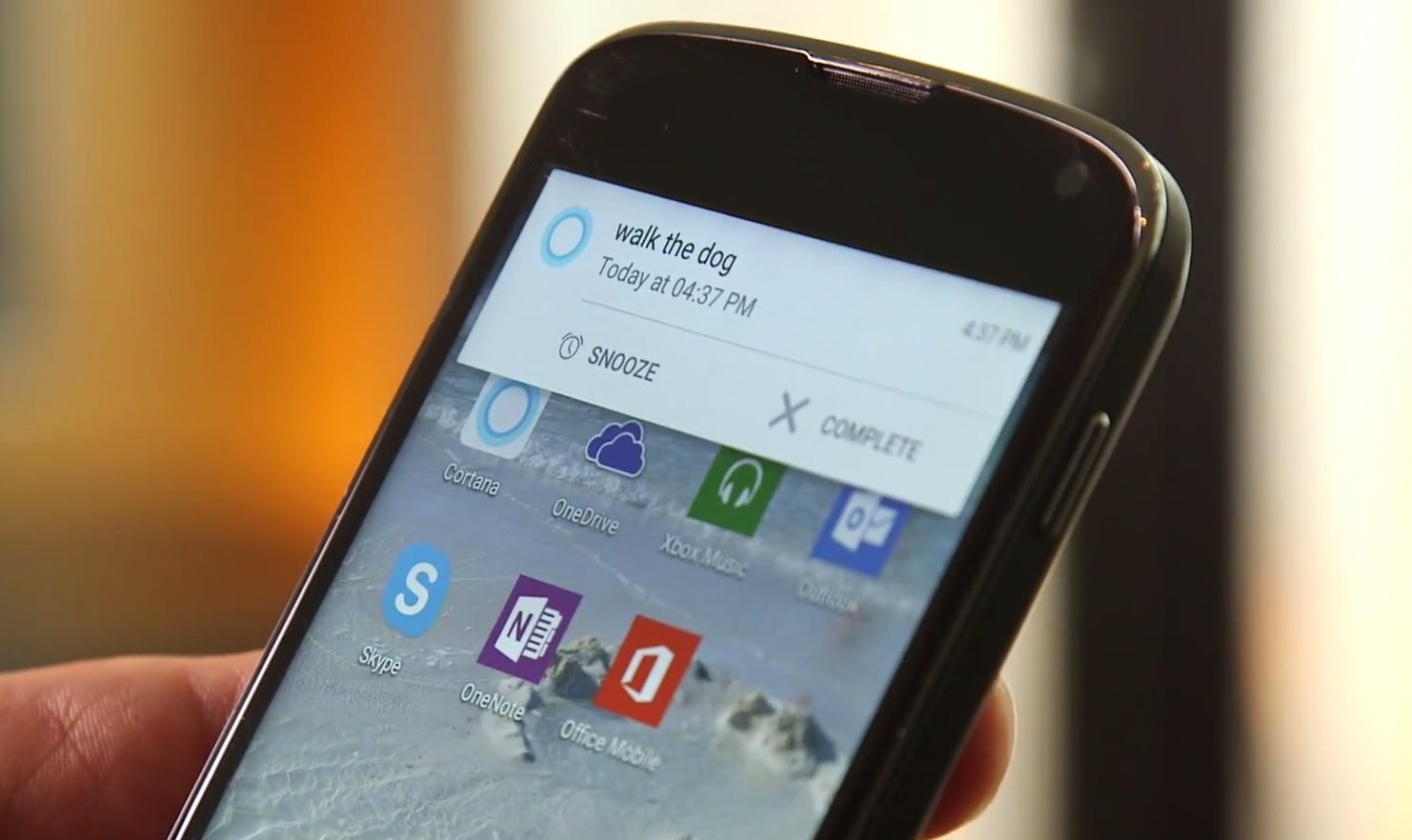
In a near future where bots are expected to be popular, Cortana on other platforms is intended to interact with a developer's bots. Thus Cortana as a platform may be strategically positioned to benefit from the massive iOS and Android install bases. In essence Cortana (and Conversation Canvases) become an extension of Microsoft's platform, "canvasing" iOS and Android, ultimately benefiting from the install base of those platforms as developers build bots for the canvases.
Such a scenario where a developer uses Microsoft tools to create bots may also lead to his using Redmond's developer's platform to reach users with Universal Windows 10 apps as well.
Just the beginning
We are still at the beginning of this journey. Cortana has yet to reach some regions, and at just two years old is seeing constant improvement. There is no expectation that the fulfillment of the strategy would occur overnight. Yet, she is progressing. Our own Jez Corden, recently wrote about her progress on Xbox and her coming interaction with UWP apps there.
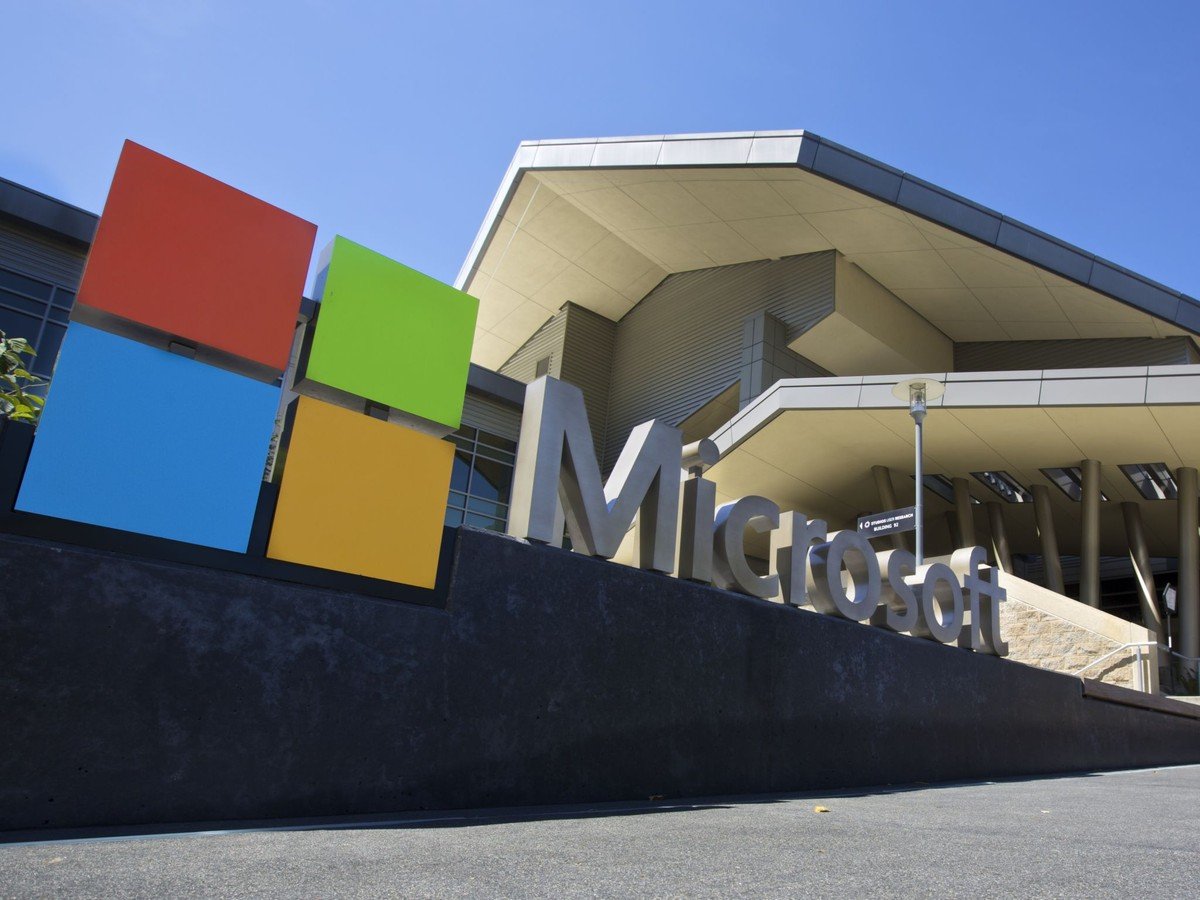
One thing is clear: Microsoft is positioning Cortana as much more than a mere digital assistant. As an unbounded, cross-platform Conversation Canvas agent, her role in the potential age of bots may be central to how users on any platform interact with their digital experiences? Will developers embrace the Conversations as a Platform vision? And if so, will Cortana emerge as The Next Big Thing? Time will tell.
So what are your thoughts? Should Microsoft have kept Cortana as a Windows-only AI digital assistant? Will bots help to bridge the app gap? Are you looking forward to a transition from traditional apps to bots? Sound off in comments and on Twitter!
And if you missed Part I or these related pieces check them out here!:
Jason L Ward is a columnist at Windows Central. He provides unique big picture analysis of the complex world of Microsoft. Jason takes the small clues and gives you an insightful big picture perspective through storytelling that you won't find *anywhere* else. Seriously, this dude thinks outside the box. Follow him on Twitter at @JLTechWord. He's doing the "write" thing!

